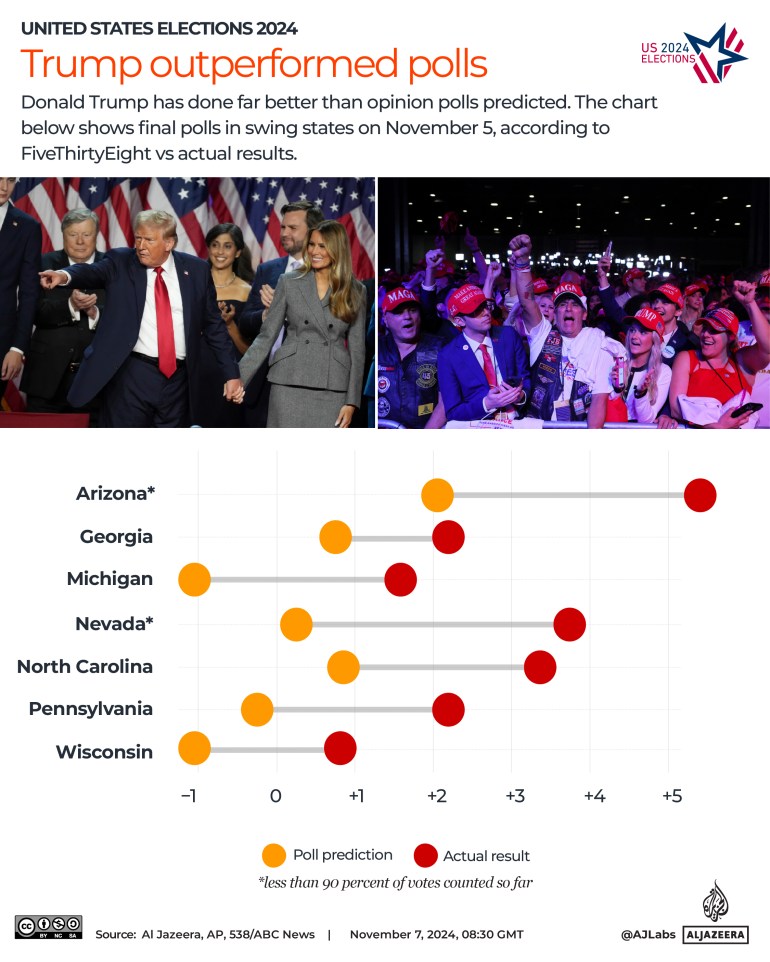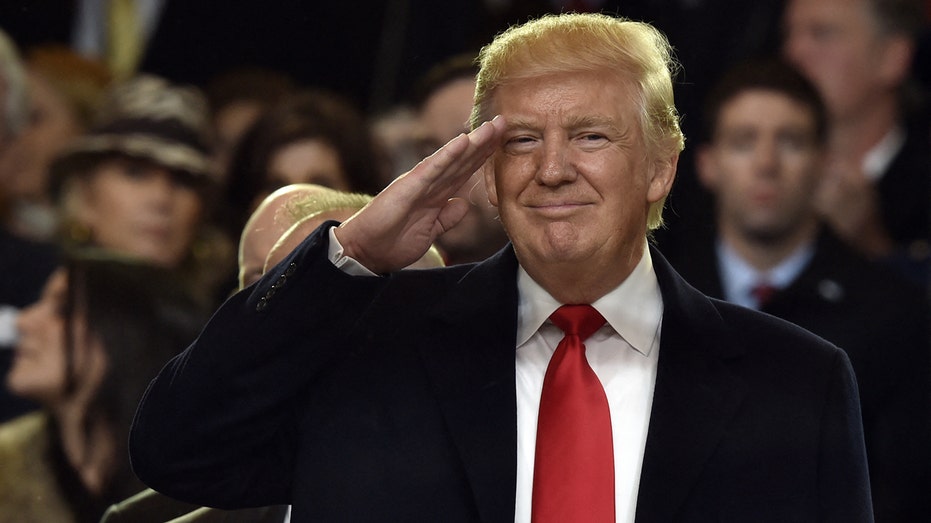In & Out: Trio of longtime Dem senators elected same year were voted out in 2024

A trio of Democrat senators who were all elected during the blue-wave 2006 midterm cycle lost their re-election bids this week in a devastating blow to the party as the GOP regains control of the Senate. Pennsylvania Sen. Bob Casey, Ohio Sen. Sherrod Brown and Montana Sen. Jon Tester have served as Democrat stalwarts since they were sworn in 2007, but they watched their Senate careers end this week as they faced high-stakes challenges from Republicans. Fox News projected on Wednesday that the Republican Party flipped the Senate red, holding 53 seats as of Thursday afternoon. Pennsylvania Sen. Bob Casey was projected to lose his high-stakes race against Republican challenger Dave McCormick on Thursday afternoon as Pennsylvania officials waded through votes in the razor-thin race. McCormick received 48.95% of the vote to Casey’s 48.49%. The Casey name has deep roots in Pennsylvania, not only from the longtime Democrat senator but also his father, Bob Casey Sr., who served as the Keystone State’s governor from 1987 to 1995 after years of serving in various other elected roles. TRUMP-BACKED PA SENATE CANDIDATE FLIPS LONGTIME DEM SEAT RED IN NAIL-BITER ELECTION Casey Jr. launched his first Senate campaign in 2005, working to unseat Republican Sen. Rick Santorum and flip the seat blue. Bolstered by his father’s wildly popular legacy and winning platform, Casey Jr. sailed to victory in the 2006 election, holding onto the seat for nearly 18 years. Trump-endorsed Dave McCormick launched his Senate campaign to unseat Casey this cycle and officially declared victory in the race on Thursday as certain Pennsylvania jurisdictions continued counting votes after experiencing some voting hiccups on Tuesday. McCormick portrayed Casey as an out-of-touch longtime politician with close ties to the Biden-Harris administration who put D.C. politics ahead of advocating for policies that benefited Pennsylvanians and voters nationwide. Ohio Democrat Sen. Sherrod Brown, who has served in the Senate since 2007 and has been in politics for half a century, was considered one of the most vulnerable incumbents heading into Tuesday night, and he ultimately fell to his GOP challenger as Trump carried Ohio by more than 10 points. ‘TIRELESS CAMPAIGN’: REACTIONS POUR IN AFTER GOP CHALLENGER FLIPS CRUCIAL SENATE SEAT HELD BY LONGTIME DEM Brown, who lost to Cleveland area businessman Bernie Moreno by about four points, attempted to highlight areas where he disagreed with President Biden but was ultimately weighted down by a voting record that was nearly 100% in line with the president and a climate of opposition to illegal immigration and a difficult economy. “This is a disappointment but is not a failure,” Brown said in his concession speech. “It will never be wrong to fight for organized labor, it will never be wrong to fight for the freedom of women to make their health care decisions, it surely will never be wrong to fight for civil rights and human rights.” Three-term Sen. Jon Tester, D-Mont., lost the 2024 Montana Senate race, but his long-held position is remembered by his ability to hold a blue seat for nearly two decades despite the state’s significant shift to red. Tester, a dirt farmer from Big Sandy, was first elected to the Senate in 2006, ousting three-term former Republican Sen. Conrad Burns for the Big Sky State seat he would go on to hold for the next 18 years. Tester’s win notably solidified Montana as a dominantly blue state that year, with two Democrat senators and a Democrat governor. Tester went on to win a second term in 2012 despite being on the ballot with then-Republican presidential candidate Mitt Romney, who won Montana’s electoral votes that year. NAVY SEAL TIM SHEEHY OUSTS 3-TERM SEN JON TESTER IN MONTANA SENATE RACE The state saw a significant shift red in 2014 when Republican Sen. Steve Daines flipped one of the long-held Democrat Senate seats for Republicans, the first of several seats that would eventually turn to the GOP. However, despite President-elect Trump winning Montana by about 20 points in 2016, Tester successfully secured a third term in 2018. Tester broke the mold of many Democrats in Washington, D.C.: a rural American farmer who championed protecting the Second Amendment and funding law enforcement. But as Tester sought a fourth term in the state, he faced an increasingly red electorate. The Democrat’s standing in the state came to an end this cycle after former Navy SEAL Tim Sheehy, a Republican, ousted him in one of the most closely watched Senate races of the 2024 cycle. Get the latest updates from the 2024 campaign trail, exclusive interviews and more at our Fox News Digital election hub.
US election results: How did opinion polls undercount Trump voters again?

Ahead of the United States presidential elections on Tuesday, public opinion polls had predicted a neck-and-neck race between Donald Trump and Vice President Kamala Harris. Yet eventually, Trump cruised to a comfortable victory, defying most polls. He has already won five of the seven swing states – Pennsylvania, Georgia, North Carolina, Michigan and Wisconsin – and appears poised to win the remaining two, Arizona and Nevada. Most of these wins are by margins larger than the polls had forecast. And, while most pollsters had predicted a narrowing margin between Harris and Trump in the popular vote, almost all showed Harris ahead. In the end, Trump is on course to not just win the popular vote – but to do so by a margin of close to 5 million votes. That’s a win no Republican can boast of since George HW Bush in 1988. Overall, Trump has already won 295 Electoral College votes, comfortably more than the 270 needed to win, while Harris won 226. If he wins Arizona and Nevada as is predicted, Trump will end up with 312 Electoral College votes. So how did the opinion polls go wrong – so wrong? What did the polls predict about swing states? Most national polls, weeks into the vote, predicted the two candidates deadlocked, deeming the race too close to call. A few days before the elections, some pollsters, such as poll aggregator FiveThirtyEight then shifted slightly and predicted that Harris was more likely to win, although by a small gap of less than 2 percent. In the seven battleground states, Harris was predicted – based on an average of polls by aggregator FiveThirtyEight – to win a majority in the traditionally Democrat, or Blue Wall states of Michigan, Pennsylvania and Wisconsin. Trump was leading in the polls in North Carolina, Georgia and Arizona, while there was almost nothing separating the two candidates in Nevada, according to the polls. On election night, Trump won all three of Michigan, Pennsylvania and Wisconsin. He is expected to win Arizona handsomely. And he is ahead in Nevada by three percentage points – well beyond what the polls had predicted. What about other states Trump won? In Iowa, the Midwestern state that has long been solidly Republican, Selzer and Co, a trusted polling company owned by analyst J Ann Selzer, surprisingly predicted Harris winning by three percentage points over Trump in the closing days of the campaign. To be sure, it was an outlier poll: an Emerson College poll that came out at almost the same time showed Trump winning the state by nine percentage points. But Selzer is widely respected in the polling industry and has repeatedly called Iowa correctly in presidential and Senate races over the decades. She cited widespread anger among white women over the overturn of hard-won abortion rights by Trump-appointed Supreme Court Judges back in 2022, and said previously undecided women voters were breaking late for Harris, giving her the edge. Trump, on his social media channel, Truth Social, condemned Selzer’s poll, calling her an “enemy” and saying that the poll was wrong “by a lot”. Eventually, Trump won the state by 13 percentage points – more than what even many Republican-funded polls had predicted. When polls get it so wrong, it “exacerbates a key challenge in this race: the perceived lack of legitimacy of polling”, Tina Fordham of risk advisory company Fordham Global Foresight told Al Jazeera. What about states that Trump lost? Pollsters got it wrong even in several states that Harris won – undercounting Trump’s support and thereby predicting a far great margin of victory for the vice president in solidly Blue states than what happened in the election: New York: The polling average at the start of November 5 had Harris winning by 16 percentage points. She won by 11 points. New Jersey: Harris, per FiveThirtyEight, was forecast to win by 17 percentage points. She beat Trump – but only by 5 points. New Hampshire: The polls suggested Harris would win by 5 percentage points. She barely beat Trump by two percentage points. Did pollsters warn of possible errors? Yes, pollsters always point out that their surveys operate within margins of error in their calculations – about 4 percent in many cases. That means that their predictions could be off by 4 percent in either direction: if Harris is shown leading Trump 48 percent to 44 percent, for instance, they could actually end up equal, or Harris could end up with an 8 percent win eventually. Nate Silver, who founded pollster FiveThirtyEight, and now anchors the newsletter, Silver Bulletin, wrote in The New York Times ahead of the vote that his “gut” went with Trump. Silver had earlier predicted a deadlock, but it was possible, he noted, that the polls were underestimating the numbers of Trump supporters because they could not reach them for surveys. But in the final days before November 5, Silver was one of several pollsters who said their models had shifted slightly more towards Harris, giving her a 48 percent chance at victory over Trump’s 47 percent. (Al Jazeera) Have polls got it wrong before? Yes. Polling in the US began from newspapers collecting local opinions in the 1880s. Predictions have often been right, historically. But of late, they have often also been horribly wrong. In 2016, opinion polls correctly predicted the popular vote for Hillary Clinton, but also had her winning, comfortably, in states like Pennsylvania, Michigan and Wisconsin, that Trump eventually won. Their forecast of Clinton winning the Electoral College was proved wrong. Polls were off in 2020 again, when COVID-19 restrictions greatly limited surveys. Most polls correctly predicted that Joe Biden would win the Electoral College and national vote. But they significantly overestimated the support for Democrats by an “unusual magnitude”, according to the American Association for Public Opinion Research (AAPOR), while undercounting voters backing Trump. Researchers called it the least accurate polling in 40 years. Then, in 2022, polls got it wrong the other way – for the midterm
German opposition hits out at Scholz for delaying confidence vote

Conservative leader wants confidence vote now, triggering January election, as poll shows more than half of Germans agree. Germany’s conservative opposition leader Friedrich Merz has slammed Chancellor Olaf Scholz, describing his decision to delay a confidence vote until next year as “irresponsible”. Merz, who leads the Christian Democratic Union (CDU), accused Scholz on Friday of being steered by “party-political motives” after he declined calls for an immediate parliamentary vote of confidence following the collapse of his rocky three-way coalition government this week. The “vast majority” of the German electorate agreed with his view that Scholz, who now leads a minority government with his Social Democrats and the Greens after the Free Democrats (FDP) party exited the coalition, was being “irresponsible”, Merz said. Opposition parties and business groups want an immediate vote, which Scholz would likely lose, enabling elections to be held eight months ahead of schedule in January, a move that they say will minimise political uncertainty. But Merz, who met Scholz on Thursday, failed to convince the chancellor to budge from his original plan of holding the vote on January 15, meaning new elections would not be held until the end of March. Scholz’s coalition fell apart on Wednesday when years of tensions culminated in a row over how to plug a multibillion-euro hole in the budget, with the chancellor sacking Finance Minister Christian Lindner, prompting the FDP to leave the government. As parties positioned themselves, Vice Chancellor Robert Habeck of the Greens party, a 55-year-old former novelist and philosopher, is set to fire the starting pistol on his own bid to become chancellor, according to news outlet Der Spiegel, quoting party sources. The break-up creates a leadership vacuum at the heart of the European Union just as it seeks a united response to the election of Donald Trump as United States president on issues ranging from Russia’s war in Ukraine to the future of the US-led NATO alliance. Attending a meeting of European leaders in Budapest on Friday, Scholz pledged to work with Trump, but stressed that the 27-nation European bloc must remain strong in light of conflicts in Europe and the Middle East. “One question is quite clear. Together as the European Union, as Europeans, we must do what is necessary for our security,” he said. Eyeing the top job, Merz adopted a more strident tone, calling on Europe to take a tougher stance during the upcoming Trump presidency. “This will make an impression in America,” he said on a talk show aired by German public broadcaster ZDF on Thursday evening. “Donald Trump is not impressed by weakness, only by strength, even opposition.” The ZDF Politbarometer, an opinion poll, confirmed that 84 percent of Germans want an election as soon as possible. Some 54 percent want it to happen before Scholz’s projected timeline. Adblock test (Why?)
Thousands evacuated as wildfires ravage homes near Los Angeles

Thousands of people have been ordered to evacuate from a wildfire northwest of Los Angeles as fierce seasonal winds blew flames into ranches and neighbourhoods, destroying dozens of homes. The wildfire has destroyed 132 structures in less than two days, fire officials said on Thursday. Firefighters and police cleared residents from neighbourhoods near Camarillo before homes were set ablaze by embers blown 3.2km (2 miles) from the firefront, Ventura County Fire Department Captain Tony McHale said. “It’s like trying to put out a blowtorch with a squirt gun,” said McHale of the fire, which started in a hillside canyon on Wednesday and tore west, driven by Santa Ana winds. Fuelled by abundant grass and scrub, with wind gusts up to 130km/h (80 mph), the blaze had burned more than 8,094 hectares (20,000 acres) by Thursday evening, authorities said. Several civilians were injured and a “significant” number of homes, businesses and other structures were destroyed, McHale added. Ventura County fire department officials said they were throwing resources at the blaze in an area that is home to 30,000 people, but that changing wind patterns meant there was hope the fire could die down in the coming days. At least 400 homes had been evacuated, Ventura County Sheriff Jim Fryhoff said, adding that 250 residents had chosen to stay behind. “I urge everyone to stay out of the areas that are impacted. The fire is still very dangerous,” he said. The cause of the fire was not immediately known, but meteorologists had raised a Red Flag Warning and a rare Particularly Dangerous Situation (PDS) warning in the area, indicating dangerous fire conditions. They said two years of above-average rainfall had led to the abundant growth of vegetation, which was now all bone-dry after a long, hot summer. Electricity companies had cut power to tens of thousands of customers in the area – a common strategy in California during high winds in a bid to reduce the risk of new fires from toppled power lines. The United States is experiencing a strong wildfire year with 3.3 million hectares (8.1 million acres) burned to date, compared with an annual, full-year average of about 2.8 million hectares (7 million acres) over the last decade, according to National Interagency Fire Center data. Adblock test (Why?)
‘Forgive me if…’: Justice DY Chandrachud’s final message as Chief Justice of India

Justice Chandrachud stepped into the shoes of his illustrious father Y V Chandrachud, who served as the longest CJI between 1978 and 1985, on November 9, 2022 and will be demitting office on November 10, a Sunday.
Where do Trump’s legal cases stand after massive election win?

The Justice Department announced Wednesday that it is seeking to wind down two federal criminal cases against President-elect Donald Trump ahead of his second term. With two other cases outstanding and the legal jeopardy expected to diminish in the months ahead, here’s a timeline of Trump’s legal troubles after his first departure from the Oval Office. Trump was indicted on 37 federal counts in June 2023 on charges stemming from Special Counsel Jack Smith’s investigation into the Capitol riot on Jan. 6, 2021. He pleaded not guilty to all charges. Trump’s team initially requested a partial pause in light of the Supreme Court ruling in Trump v. United States, wherein the court held that a former president has substantial immunity from prosecution for official acts committed while in office, but not for unofficial acts. JONATHAN TURLEY: TRUMP’S VICTORY PUTS AN END TO DEMOCRAT ATTACKS ON ONE BRANCH OF GOVERNMENT Judge Aileen Cannon eventually dismissed the case against Trump in July, finding that Smith was improperly appointed to the special counsel role under the Constitution’s Appointments Clause. The Appointments Clause states, “Ambassadors, other public Ministers and Consuls, Judges of the Supreme Court, and all other Officers of the United States be appointed by the President subject to the advice and consent of the Senate, although Congress may vest the appointment of inferior officers in the President alone, in the Courts of Law, or in the Heads of Departments.” Smith was never confirmed by the Senate. Smith appealed the decision in August, with the filing reading, “The Attorney General validly appointed the Special Counsel, who is also properly funded.” Smith filed another indictment in connection to his investigation against Trump in August 2023. He was indicted on four federal charges stemming out of the probe, including conspiracy to defraud the United States; conspiracy to obstruct an official proceeding; obstruction of and attempt to obstruct an official proceeding; and conspiracy against rights. Trump pleaded not guilty to all charges and argued he should be immune from prosecution from official acts done as president of the United States. In July this year, the Supreme Court in its ruling on presidential immunity sent the matter back to a lower court, as the justices did not apply the ruling to whether or not former President Trump is immune from prosecution regarding actions related to efforts to overturn the results of the 2020 election. TRUMP SUES CBS NEWS FOR $10 BILLION ALLEGING ‘DECEPTIVE DOCTORING’ OF HARRIS’ ’60 MINUTES’ INTERVIEW Trump was indicted a second time in August. The new indictment maintained the previous criminal charges but narrowed the allegations after the Supreme Court ruling, clarifying Trump’s role as a current candidate and making clear the allegations regarding his conversations with then-Vice President Mike Pence in his ceremonial role as president of the Senate. The 165-page filing submitted by Smith, in which he laid out the case and alleged evidence he would use in an eventual trial against the president-elect, was unsealed in early October. Judge Tanya Chutkan ordered more documents to be open to the public later that month, just weeks before the presidential election. Trump’s team moved to dismiss Smith from the case in late October, arguing he was unlawfully appointed. Manhattan District Attorney Alvin Bragg indicted Trump in 2023 on 34 counts of falsifying business records in the first degree relating to alleged hush money payments made during the 2016 presidential campaign. Bragg alleged Trump “repeatedly and fraudulently falsified New York business records to conceal criminal conduct that hid damaging information from the voting public during the 2016 presidential election.” Trump pleaded not guilty to all counts. The president-elect was later found guilty on all counts, making him the first former president of the United States to be convicted of a crime. He appealed the decision. His sentencing date was initially set for July 11, just days before the Republican National Convention where he was set to be formally nominated as the 2024 GOP presidential nominee. Judge Juan Merchan delayed the sentencing to Sept. 18 and once again to Nov. 26, after the presidential election. Trump’s team requested the case be removed to federal court in October this year, citing the Supreme Court’s presidential immunity ruling and thus arguing he cannot be prosecuted for official acts he performed as president. Merchan is also scheduled to make a decision on Nov. 12 on Trump’s motion to vacate the case. Trump was indicted in Georgia in August 2023 after a yearslong criminal investigation led by state prosecutors into his alleged efforts to overturn the 2020 presidential election in the state. Trump pleaded not guilty to all counts. In early 2023, Fulton County Judge Scott McAfee dismissed six of the charges against Trump, saying District Attorney Fani Willis failed to allege sufficient detail. It was then thrown into disarray when it was revealed Willis reportedly had an “improper affair” with Nathan Wade, a prosecutor she hired to help bring the case against Trump. Wade was later removed. The Georgia Court of Appeals paused the proceeding in June until it heard the case to disqualify Willis. The court also said it would hear Trump’s argument to have Willis disqualified on Dec. 5, a month after the election. When reached by Fox News Digital for comment on the state of the president-elect’s legal cases on Thursday, the Trump campaign said, “The American people have re-elected President Trump with an overwhelming mandate to Make America Great Again.” “It is now abundantly clear that Americans want an immediate end to the weaponization of our justice system, so we can, as President Trump said in his historic speech yesterday, unify our country and work together for the betterment of our nation,” campaign spokesman Steven Cheung said. Fox News’ Brooke Singman, David Spunt and Jake Gibson contributed to this report.
Trump’s promise to unravel Biden’s climate policies could take years to fulfill
The president-elect has pledged to weaken air pollution regulations, reverse efforts to slow climate change and continue to boost oil and gas production.
How “wildly successful” anti-trans ads fired up Texas voters for Republicans

The barrage of ads focused on trans kids playing youth sports motivated the Republican base as Democrats struggled to respond.
New York Dem warns ‘vilifying voters of color as white supremacists’ pushes ‘them further into Trump’s camp’

As the political left reflects on the 2024 election results, Rep. Ritchie Torres, D-N.Y., warned that “vilifying voters of color as white supremacists” will only push them further toward President-elect Trump. “Popular explanations for the outcome of the election seem to include white supremacy, patriarchy, misogyny…” Torres noted in a post on X. “I am going to state the obvious here: vilifying voters of color as white supremacists will not attract them back to the Democratic Party. It will drive them further into Trump’s camp. The purpose of politics is not to repel but to attract. Condescension is the most powerful repellant in politics. Voters viscerally resent condescension and will punish you for it at the ballot box,” he added. NEW YORK DEMOCRAT RIPS ‘FAR LEFT’ FOR TRUMP VICTORY: ‘IVORY-TOWERED NONSENSE’ Trump soundly defeated Vice President Kamala Harris on Tuesday to win the 2024 White House contest. Torres has suggested that signs of the impending drubbing were clear. “The signs of a decisive defeat were staring us in the face all along. We were simply in denial about them or willfully blind to them, substituting magical thinking for actual analysis,” he declared in a tweet. BERNIE SANDERS EXCORIATES DEMOCRATIC PARTY, CALLS CAMPAIGN ‘DISASTROUS’ AFTER TRUMP VICTORY “In recent history, there’s no precedent for an incumbent party winning a presidential election when the percentage of Americans who think the country is on the right track or headed in the right direction is in the 20s. The structural challenge was simply insurmountable,” he added. Torres, who has served in the House of Representatives since 2021 and won another term in office during the 2024 election, has accused the “far left” of alienating people from the Democratic Party. “Donald Trump has no greater friend than the far left, which has managed to alienate historic numbers of Latinos, Blacks, Asians, and Jews from the Democratic Party with absurdities like ‘Defund the Police’ or ‘From the River to the Sea’ or ‘Latinx,’” the congressman opined in a post on X. REP. RITCHIE TORRES CALLS OUT NY TIMES ‘BIAS’ FOR NOT INTERVIEWING HIM FOR STORY ABOUT HIS ANTI-ISRAEL CRITICS “There is more to lose than there is to gain politically from pandering to a far left that is more representative of Twitter, Twitch, and TikTok than it is of the real world. The working class is not buying the ivory-towered nonsense that the far left is selling,” he added. The lawmaker has also suggested that his side of the political aisle should not push the idea that they suffer from a “messaging problem.” “We should expunge from our vocabulary the words: we have a ‘messaging problem,’” Torres wrote on X. “When over 70% of Americans think we are on the wrong track or headed in the wrong direction, that is not a messaging problem. That is reality problem. “Inflation and immigration are not ‘messaging problems.’ These are realities that produced discontent widespread enough to hand Donald Trump the presidency. We ignore the real-world messages that these realities send at our own peril,” he warned.
‘Yesssss!’: Israel reacts to Donald Trump’s return to power in US election

Even before the US presidential election polls had closed on Tuesday night, Israel’s far-right National Security Minister Itamar Ben-Gvir had taken to Twitter, posting “Yesssss” in English, while adding emojis of a flexing bicep and images of the Israeli and American flags. Yesssss 💪🏻🇮🇱🇺🇸 https://t.co/kPqkYI3PDP — איתמר בן גביר (@itamarbengvir) November 6, 2024 Israel’s prime minister, Benjamin Netanyahu, was only slightly slower in congratulating Trump on his triumph in the US presidential election, becoming the first world leader to do so and framing Trump’s victory as a “powerful recommitment to the great alliance between Israel and America”. Dear Donald and Melania Trump, Congratulations on history’s greatest comeback! Your historic return to the White House offers a new beginning for America and a powerful recommitment to the great alliance between Israel and America. This is a huge victory! In true friendship,… pic.twitter.com/B54NSo2BMA — Benjamin Netanyahu – בנימין נתניהו (@netanyahu) November 6, 2024 Two days before this week’s election, which saw former US President Donald Trump stage one of the wildest political comebacks in recent history, leading the Republican Party to a landslide victory, polls in Israeli media showed Trump had already won the hearts and minds of many in Israel. Asked who they would like to see in the White House, almost 65 percent of respondents said they preferred Trump over his rival, Kamala Harris. Among those who identified themselves as Jewish, the difference was even more marked, with 72 percent of those polled telling the Israel Democracy Institute they felt Israel’s interests would be better served by a Trump presidency. This is a further lurch towards the Republicans. A similar poll conducted by the same body in 2020 showed that 63 percent of Israelis favoured Trump over the eventual victor, Joe Biden. For Vice President Kamala Harris, who polls showed took a beating for her administration’s unflinching, if occasionally critical, support of Israel’s war on Gaza and its refusal to halt military aid, celebrations of Trump’s win in Israel likely come as another twist of the knife in her defeat. Donald Trump shakes hands with Benjamin Netanyahu as they pose for a photo during their meeting at Trump’s Mar-a-Lago estate, in Palm Beach, Florida on July 26, 2024 [Amos Ben-Gershom (GPO)/Handout/Anadolu via Getty Images] A ‘watershed moment’ “People are celebrating now,” pollster and former political aide to, among others, Netanyahu, Mitchell Barak told Al Jazeera from Jerusalem. “I mean, you’ve seen the polls, people see this as a win for Israel, and for Netanyahu. He [Netanyahu] gambled on this, reckoning that he just had to hold on till November and a Trump victory, and that gamble turned out to be right. “Within Israel, people see this as being a watershed moment,” he said. In the build-up to the 2020 election, Trump had told US voters in a bid to win the Jewish vote that “the Jewish state has never had a better friend in the White House than your president, Donald J Trump”. In this, unlike many of the former US president’s statements, he appeared factually correct. In his first term as president, Trump defied international norms and recognised the occupied Golan Heights – Syrian territory, two-thirds of which is occupied by Israel – as Israeli territory, accepted Jerusalem as Israel’s capital, subsequently moving the US embassy and installed its pro-settler ambassador there. Consolidating Israel’s position within the region, the US president also embarked on what he termed the Abraham Accords, leading to the normalisation of relations between Israel and four Arab states; Bahrain, the UAE, Morocco and Sudan, in return for US concessions and, in many cases, access to Israel’s cutting edge intelligence and weapons technology. More recently, Trump emphasised his wish to re-establish the warm relationship he enjoyed with Netanyahu during his first presidency in July this year when he welcomed the Israeli prime minister to his Florida estate, Mar-a-Lago. In contrast, the Biden administration’s relations with Netanyahu, while strong, have cooled through the course of 13 months of war on Gaza. First, there were the repeated US “concerns” over the Israeli campaign on Gaza that has so far killed 43,391 people – mostly women and children – and with many thousands more lost and presumed dead under the rubble. Then there were Biden’s red lines on Israel’s subsequent invasion of Rafah. And finally, the US government’s recent requests that aid be allowed into northern Gaza, which aid agencies have said sits upon the brink of famine. All this appears to have jarred with the Israeli prime minister who, in March this year, went so far as to say that US President Biden – whose unflinching military and diplomatic support has underpinned Israel’s war on Gaza – was “wrong” in his criticism of Israel. Given the pressure that Netanyahu faces both at home – from people who want a Gaza ceasefire deal to be done to secure some chance of retrieving the remaining Israeli captives there – and abroad, where many countries are appalled by the levels of violence seen in Gaza – Netanyahu needs an American ally that is uncritical, analysts have said. Demonstrators in front of the Ministry of Defence building in Tel Aviv, Israel, carry banners and posters criticising the government and demanding a ceasefire in Gaza and a swap deal for the captives held in Gaza on November 2, 2024 [Mostafa Alkharouf/Anadolu via Getty Images] End of the two-state solution? As well as being more likely to give Netanyahu free rein over his actions in Gaza and the West Bank – as is feared by Palestinians in the wake of the election – Trump may also be the catalyst to putting paid to any notion of a two-state solution. “People often accuse the Israeli right of never looking too far forward,” independent Israeli analyst Nimrod Flaschenberg said of Netanyahu and his cabinet. “And they’re often right. However, with Trump, they’ve recognised that his election probably marks an end to the two-state solution and Gaza, as we’ve known it.” In the US, despite its unflinching
